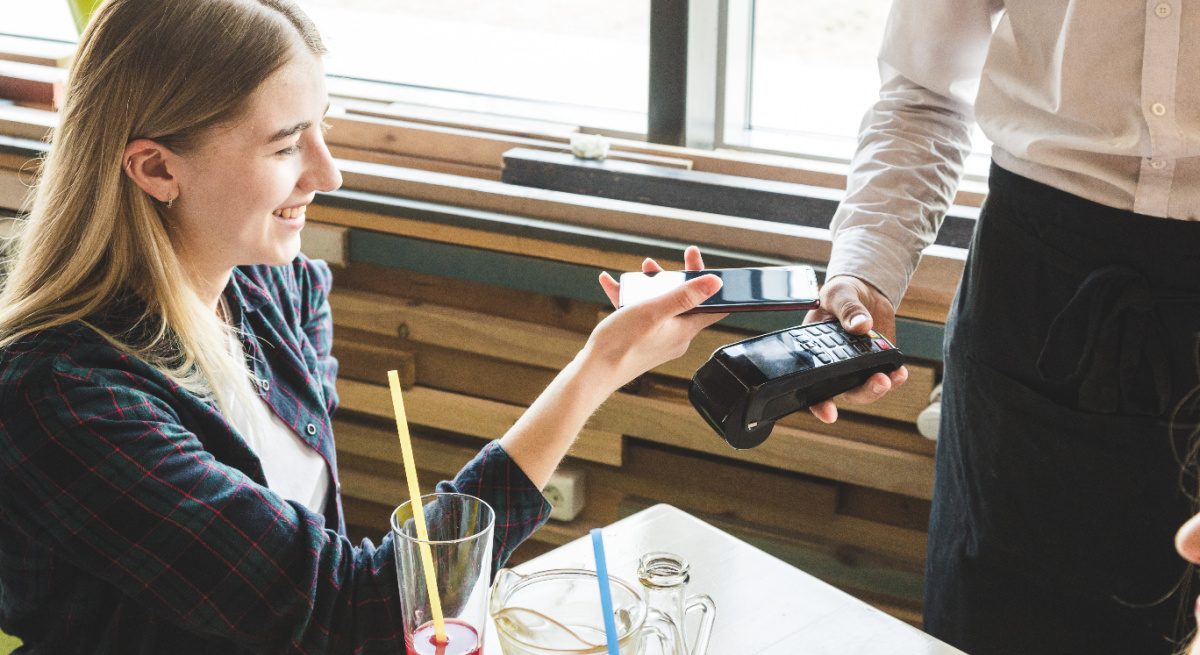Pros and Cons of Touchless Payment Methods in Restaurants
3 Min Read By Devin Partida
Because of the COVID-19 pandemic, it was critical to reduce frequent touch points in brick-and-mortar stores, including restaurants, bars and cafes. In bathrooms, it’s becoming more common to see touchless paper towel dispensers, hand soaps and air dryers.
Another touchless feature many restaurants are adding to their operations is payment methods. More alternatives to cash are emerging, and restaurant owners must consider the advantages and disadvantages of using them to improve the transaction process.
Here are some of the benefits and drawbacks of implementing a touchless payment system into your operations, so you’re better able to decide if it’s right for your restaurant.
Rising Popularity of Touchless Payment Methods
Although touchless payment methods were first introduced in 1995 by South Korea’s transit system, the global pandemic accelerated their adoption in the restaurant industry. Customers and business owners alike can benefit from their use. One of the main reasons these systems are growing in popularity is the convenience it brings to the table.
The payment method is pretty simple — customers can tap or hold their card or smart device over the POS system. Near field communication (NFC) technology then captures information from the card or device and continues processing the payment. NFC tech uses a radio frequency that allows it to communicate with the restaurant’s POS system.
This form of payment allows for quick, reliable, and secure transactions. Customers can avoid waiting for a server to bring over their check, run their credit card and sign the receipt. It’s a much more efficient payment method than cash or traditional card insertion with PIN entry.
Pros of Touchless Payments
Here are some of the advantages of touchless payments that could help your business grow and thrive in a competitive environment.
1. Better Customer Experience (CX)
CX can make or break your business. People who have poor experiences with paying their bills may not come back or convert into loyal customers.
However, if you offer convenient payment methods as your unique selling point (USP), you may be more likely to retain customers. Customer experience is a top priority for businesses in the next five years, and restaurants are no exception.
2. Secure Transactions and Fraud Protection
Touchless payment transactions are secure and encrypted to discourage any hacking attempts. The last thing you want is for a customer to experience fraud or have their information stolen.
When a customer enters a restaurant, their information must be protected and safe from would-be criminals. Using touchless payment options will help keep payments secure.
3. Improved Customer Loyalty Programs
When customers download your restaurant’s mobile app, they should also be able to connect a credit or debit card to their account. This way, when they order online or come to pick up their food, it’s already paid for.
When customers sit down at your restaurant, they should be able to pay for their meal with this app and earn rewards for their purchases. This helps build loyalty within your restaurant and keeps people coming back for more.
Cons of Touchless Payments
While the pros of using touchless payments may be convincing, it’s crucial to identify the cons you may experience if you decide to integrate them into your restaurant operations.
1. Age Gap in Technology Adoption
Millennials and Gen Z are known for adopting technology rapidly, and there’s evidence that suggests they’ve moved us toward a touchless payment future.
This bodes well for you as a restaurant or business owner, as you’ll have an easier time obtaining these younger customers. However, this is a double-edged sword — older populations may not be keen on using technology to pay their bills. Accounting for this age gap is something you’ll need to consider.
2. Security Concerns
While touchless payments are known for being secure and safe for customers, they still come with risks. If a customer’s card is lost or stolen, touchless charges lack the PIN authentication that would typically stop criminals in their tracks. Thankfully, many banks can issue a 100% guarantee for customers who believe their card was charged fraudulently.
When you’re aware of these pros and cons, you’re better equipped to decide if implementing touchless payment methods is suitable for your restaurant. Many establishments are adopting this new technology to improve their customer service and make transactions simpler.
As technology advances, it’s interesting to see what trends stick and which do not. Touchless payment may have been a fad at one point, but it’s slowly taking over the restaurant industry. Outlining the pros and cons will help you make the right decision for your eatery.


